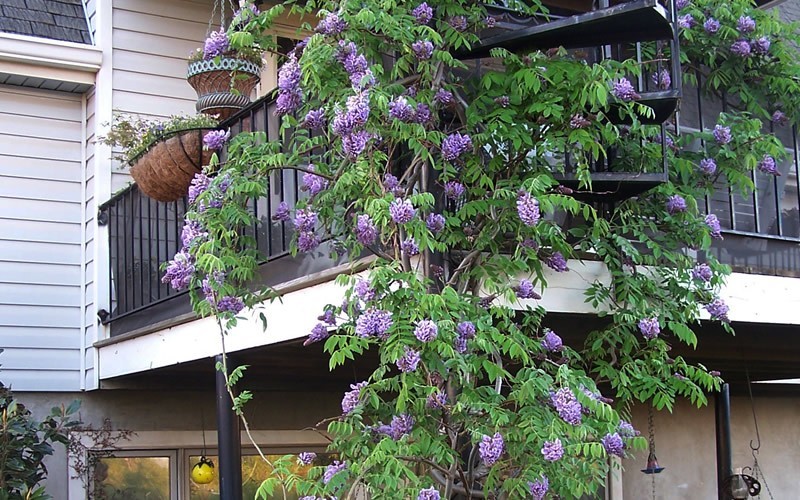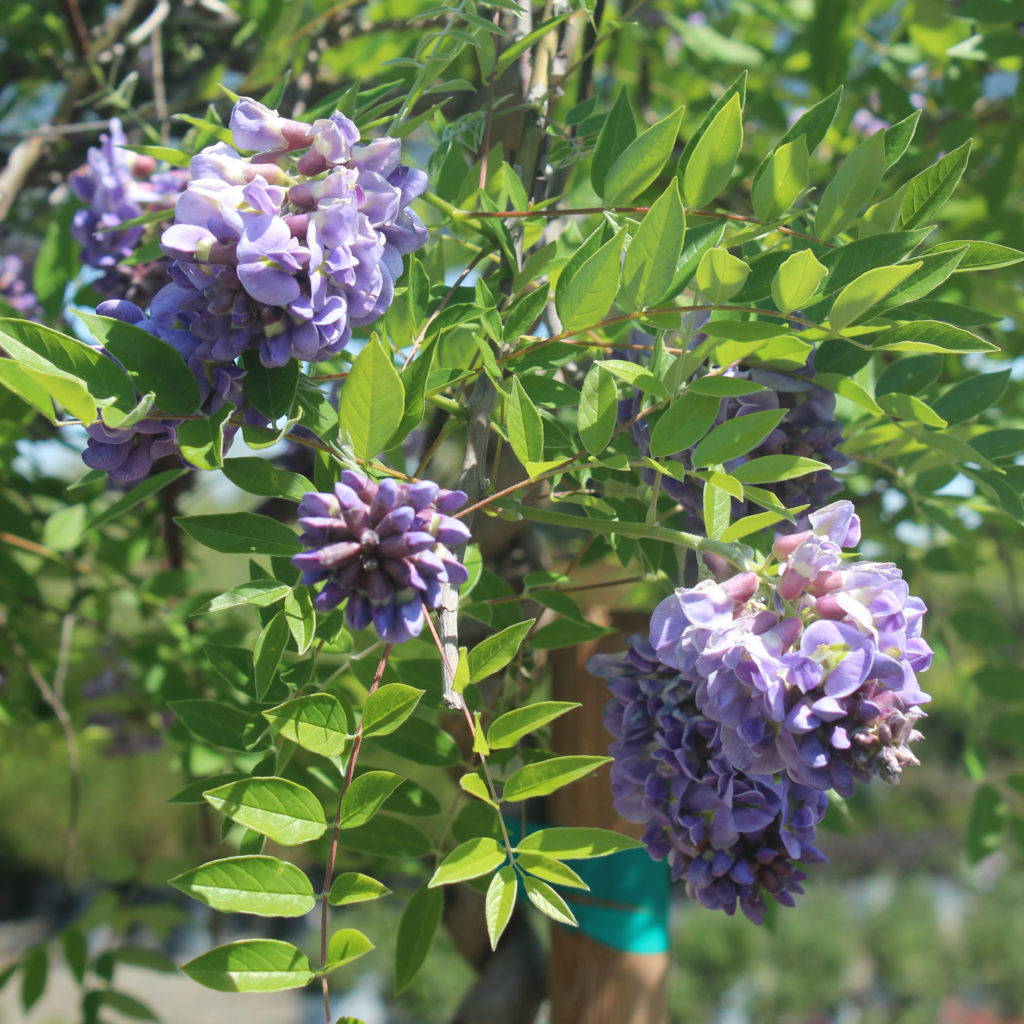

Once established, it is quite tolerant of dry conditions, and it loves heat and humidity. Another light trim after the first flush of flowers will improve branching and may even stimulate a second season of flowers. Amethyst Falls Wisteria is also unpalatable to deer and other nibbling creatures, making it a good choice for open settings such as woodland and meadow gardens. Regular annual pruning is best in late winter. Trim all but the central stem, and prune the lower branches to encourage it to grow straight upwards with a "trunk" and a canopy of branches and blooms at the top.

Blanket outbuildings, unsightly fences, stumps, and other garden structures with it, or show it off on an arbor, pergola, or even a strong trellis.Īmethyst Falls Wisteria can also be pruned into "tree" form by staking it young to a post or pole. Amethyst Falls lacks the aggressive nature of Oriental varieties of wisteria, and this hybrid is both deer resistant and drought tolerant. Unless you prune it to keep it small (which it is happy to have you do), it will quickly grow and spread. Winner of several awards for its healthy green foliage, it is a lovely presence from spring through fall.įind a strong support on which to grow Amethyst Falls Wisteria. Arriving about two weeks later than those of other wisterias, the blooms manage to avoid late spring frosts.Īmethyst Falls Wisteria is also unpalatable to deer and other nibbling creatures, making it a good choice for open settings such as woodland and meadow gardens. You won't have to do a thing to keep your Amethyst Falls Wisteria looking gorgeous. Copious amounts of fragrant creamy-white flowers in spring and summer. There are no known issues regarding insects or pests, and it's deer resistant as well. Wisteria frutescens 'Amethyst Falls' A fast-growing, twining, evergreen vine with shiny, dark green, oval leaves. Prune in late winter or early spring to encourage new growth. This variety blooms on new growth with tightly clustered lavender panicles in mid-spring, then again in late summer. The stems will find anchor points to wrap around to gain support. The Amethyst Falls Wisteria is easy to grow and adapts well to a wide range of soils. A preferred choice to the Japanese and Chinese varieties that have become invasive in some areas, 'Amethyst Falls' is a cultivar of North American native wisteria. This native variety is less vigorous and easier to manage, but retains all the beauty of its less restrained cousins.Īmethyst Falls Wisteria flowers younger than the Asian species, blooming its very first season with fragrant, vividly blue flowers in 4- to 6-inch clusters that appear in spring and repeat all summer. Amethyst Falls Wisteria has attractive green foliage on quick growing, twining stems. Wisteria ‘Amethyst Falls’ (Wisteria frutescens ‘Amethyst Falls’) combines old-world appeal with new-world upkeep. Supplied as pictured, in bud and flower in season, trained on a trellis in approx 1.5-2 litre containers.Reaching 30 feet or more, Amethyst Falls Wisteria, like other wisteria, is a strong grower, though not a runaway presence like some others can be.
#AMETHYST FALLS WISTERIA FULL#
Easy to keep - just plant in full sun or part shade in well drained fertile soil. Unlike most wisterias, this variety differs in that it has a compact, almost dwarf habit, and is easily kept to a sensible size - it's ideal for covering just part of a wall or fence. This variety ''Amethyst Falls'' not only flowers in the spring, but should repeat flower in the summer. It's extremely versatile and provides a spectacular blossoming of flowers. Wisteria is one of the best loved climbing plants.

The dense clusters of lilac-blue flowers seem to drip from its twining stems and they emit a delicious fragrance, so make sure you plant it near a seating area or entrance if you can to enjoy this fragrance. If the garden is large enough, then plant them out against the wall of a house for an incredible late spring and summer display. Trees - Young, Semi-mature and Larger TreesĪmethyst Falls is a native species of North America, this is more compact than its Oriental cousins, so is ideally suited not only for growing in the garden, but also for large pots, which can easily be be placed under pergolas or arches to transform them into a charming feature - perfect for that cottage garden look.Perennial Plants & Herbaceous Perennials.Palms & Palm Trees for Patio and Garden.Raspberry Canes - Grow your own Raspberries.


 0 kommentar(er)
0 kommentar(er)
